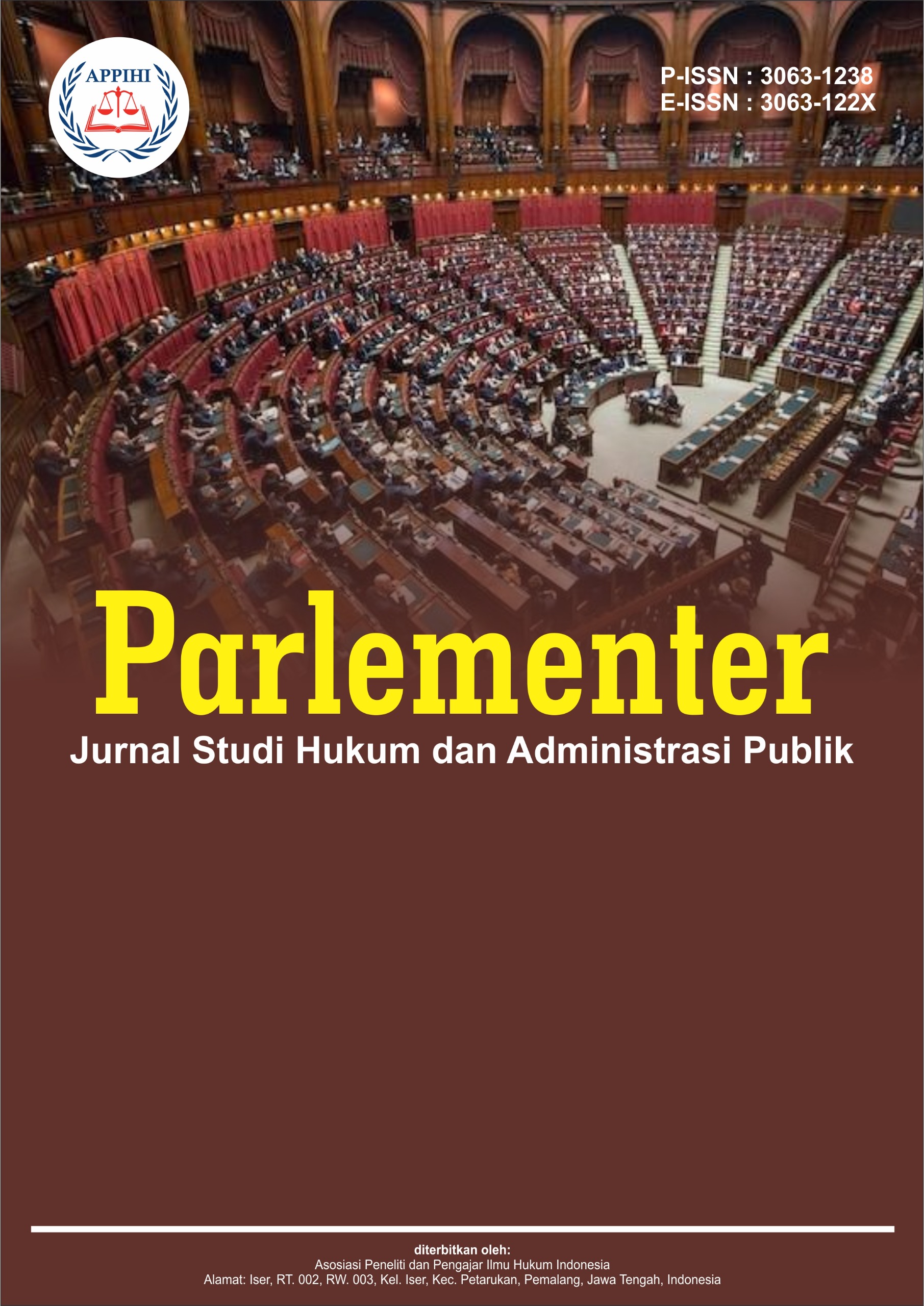Transformasi Kebijakan Kesetaraan Gender dalam Pengembangan SDM Kementerian Keuangan
DOI:
https://doi.org/10.62383/parlementer.v1i4.495Keywords:
Gender Equality, Human Resource Development, Inclusive Leadership, Organizational Performance, Public SectorAbstract
This study examines the impact of Sri Mulyani’s inclusive leadership on human resource development (HRD) in the Indonesian Ministry of Finance, with a focus on gender equality policies and employee capacity-building programs. Using a literature review method, this research analyzes relevant studies on inclusive leadership and its application in the public sector. The findings indicate that Sri Mulyani’s inclusive leadership, which emphasizes openness, accessibility, and equality, has successfully increased women's participation in leadership positions and fostered a more collaborative work environment. The gender equality policies implemented have not only increased the number of women in strategic positions but also strengthened overall organizational performance. Additionally, capacity-building programsdesigned to enhance technical and managerial skills have proven effective in improving productivity and innovationwithin the Ministry of Finance. This study concludes that Sri Mulyani’s inclusive leadership can serve as a model for other public sector organizations, both in Indonesia and internationally, to promote gender equality and enhance organizational performance through inclusive HR development.
Downloads
References
Abi, N. (2023). Peran gaya kepemimpinan Sri Mulyani Indrawati dalam upaya perwujudan stabilitas keuangan dan pertumbuhan ekonomi Indonesia. JMA, 2(5), 3031–5220. https://doi.org/10.62281
Al Hameli, A., Mertzanis, C., & Kampouris, I. (2023). Women’s empowerment conditions, institutions, and firm performance in the MENA region. Accounting Forum. https://doi.org/10.1080/01559982.2023.2179866
Ali, M., & Konrad, A. M. (2017). Antecedents and consequences of diversity and equality management systems: The importance of gender diversity in the TMT and lower to middle management. European Management Journal, 35(4), 440–453. https://doi.org/10.1016/j.emj.2017.02.002
Amin, M., Till, A., & McKimm, J. (2018). Inclusive and person-centred leadership: Creating a culture that involves everyone. British Journal of Hospital Medicine, 79(7), 402–407. https://doi.org/10.12968/hmed.2018.79.7.402
Ashikali, T., & Groeneveld, S. (2013). Diversity management in public organizations and its effect on employees’ affective commitment. Review of Public Personnel Administration, 35(2), 146–168. https://doi.org/10.1177/0734371x13511088
Barak, M. E. M. (2016). Managing diversity: Toward a globally inclusive workplace. SAGE Publications.
Carmeli, A., Reiter-Palmon, R., & Ziv, E. (2010). Inclusive leadership and employee involvement in creative tasks in the workplace: The mediating role of psychological safety. Creativity Research Journal, 22(3), 250–260. https://doi.org/10.1080/10400419.2010.504654
Flink, C., & Chen, C. (2021). Management capacity, financial resources, and organizational performance: Evidence from state transportation agencies. Public Performance & Management Review, 44(6), 1341–1366. https://doi.org/10.1080/15309576.2021.1933108
Homan, A. C., Knippenberg, D. L. van, van Kleef, G. A., & De Dreu, C. K. W. (2005). Interacting dimensions of diversity: Cross-categorization and the effects of informational diversity. SSRN Electronic Journal. https://doi.org/10.2139/ssrn.732663
Jawas, U. (2017). The influence of socio-cultural factors on leadership practices for instructional improvement in Indonesian schools. School Leadership & Management, 37(5), 500–519. https://doi.org/10.1080/13632434.2017.1366440
Karam Ashmawy, I. (2023). Inclusive leadership for employee workplace well-being in public organizations.
Ke, J., Zhang, J., & Zheng, L. (2022). Inclusive leadership, workplace spirituality, and job performance in the public sector: A multi-level double-moderated mediation model of leader-member exchange and perceived dissimilarity. Public Performance and Management Review, 45(3), 672–705. https://doi.org/10.1080/15309576.2022.2069138
Maharani, A. A., Kunci, K., Mulyani, S., Kepemimpinan, M., Keuangan, B., & Belakang, P. A. L. (2022). Sri Mulyani: Sosok Sri Kandi Indonesia.
Nabila, H. (2021). Sri Mulyani Indrawati, sang Sri Kandi masa kini pengharum negeri. https://www.researchgate.net/publication/352381288
Nembhard, I. M., & Edmondson, A. C. (2016). Making it safe: The effects of leader inclusiveness and professional status on psychological safety and improvement efforts in health care teams. Journal of Organizational Behavior, 27(7), 941–966. https://doi.org/10.1002/job.413
Pitts, D. W., Hicklin, A. K., Hawes, D. P., & Melton, E. (2010). What drives the implementation of diversity management programs? Evidence from public organizations. Journal of Public Administration Research and Theory, 20(4), 867–886. https://doi.org/10.1093/jopart/mup044
Post, C., & Byron, K. (2015). Women on boards and firm financial performance: A meta-analysis. Academy of Management Journal, 58(5), 1546–1571. https://doi.org/10.5465/amj.2013.0319
Prastya, H. (2019). Perempuan dan politik: Studi terhadap kinerja Menteri Keuangan Sri Mulyani dalam Kabinet Kerja Periode 2016-2018.
Purcell, N. L., & Nagao, H. (2023). Women in leadership in the party: Women’s representation in intra-party leadership and party positions on gender equality in employment. Party Politics. https://doi.org/10.1177/13540688231196424
Randel, A. E., Galvin, B. M., Shore, L. M., Ehrhart, K. H., Chung, B. G., Dean, M. A., & Kedharnath, U. (2018). Inclusive leadership: Realizing positive outcomes through belongingness and being valued for uniqueness. Human Resource Management Review, 28(2), 190–203. https://doi.org/10.1016/j.hrmr.2017.07.002
Sabharwal, M., Levine, H., & D’Agostino, M. J. (2017). Gender differences in the leadership styles of MPA directors. Journal of Public Affairs Education, 23(3), 869–884. https://doi.org/10.1080/15236803.2017.12002293
Shore, L. M., Cleveland, J. N., & Sanchez, D. (2018). Inclusive workplaces: A review and model. Human Resource Management Review, 28(2), 176–189. https://doi.org/10.1016/j.hrmr.2017.07.003
Siregar, B. P. (2016, December 22). Jokowi: Ada 9 Menteri Perempuan di Kabinet Kerja. Warta Ekonomi. https://www.wartaekonomi.co.id/read124961/jokowi-ada-9-menteri-perempuan-di-kabinet-kerja.html
Tat Wai Yu, B., & Wai Ming, T. (2008). Effects of control mechanisms on positive organizational change. Journal of Organizational Change Management, 21(3), 385–404. https://doi.org/10.1108/09534810810874840
Taylor, A. (2023). Armstrong’s Handbook of Human Resource Management Practice: A Guide to the Theory and Practice of People Management. Kogan Page.
Zed, M. (2003). Metode penelitian kepustakaan. Yayasan Obor Indonesia.
Downloads
Published
How to Cite
Issue
Section
License
Copyright (c) 2024 Parlementer : Jurnal Studi Hukum dan Administrasi Publik

This work is licensed under a Creative Commons Attribution-ShareAlike 4.0 International License.






